11 tips for high altitude camping
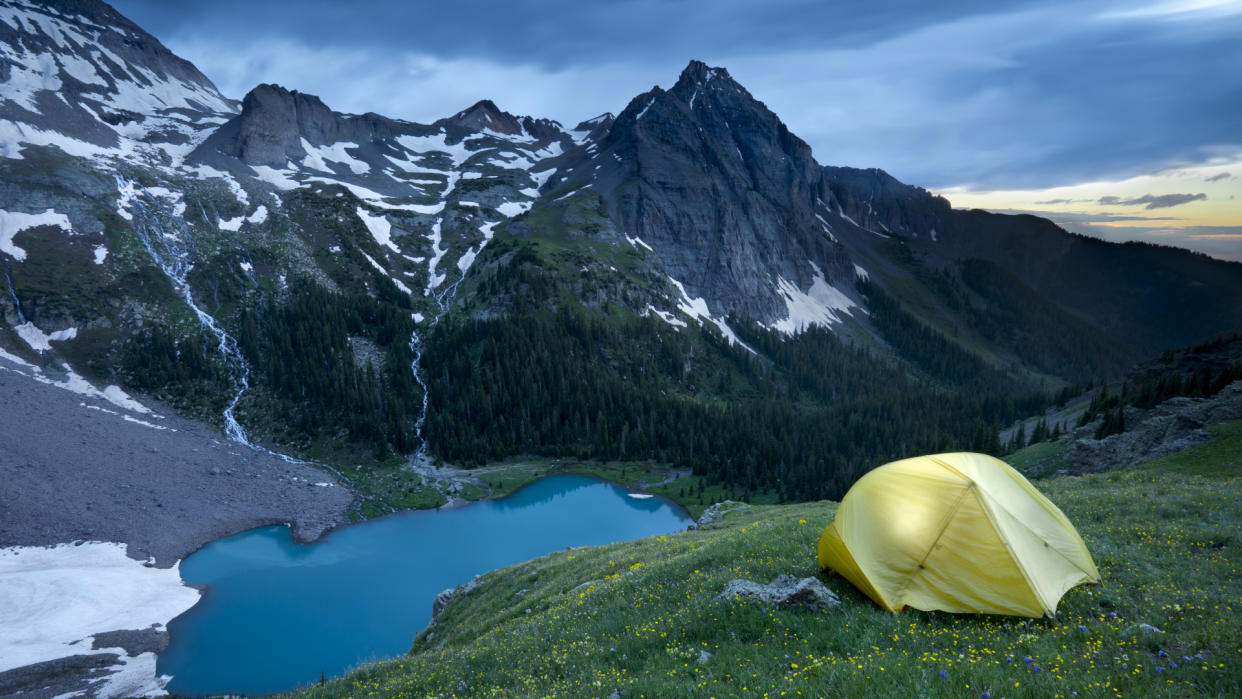
Most of my most cherished camping adventures have taken place in the high country. As soon as winter had well and truly been banished when I lived in the Rocky Mountains, you could find me enjoying the solitude of an alpine lake or base camping in a remote mountain pass before summiting a Colorado 14er at dawn. The wilderness at high altitude is pristine, the views unparalleled and more often than not, I’d have the entire place to myself.
Many of the best mountain ranges and National Parks offer bucket list-worthy high altitude adventures, but to really get the best out of them, you’re usually going to have to hike in and spend the night. Camping at high altitude is thrilling, but it’s not the same as sleeping on the valley floor. From the weather and conditions to the gear and fuel you need, you’re going to want to do things a little differently once you gain some vertical feet. If you’re heading to the mountains for the first time, read on for our 11 tips for high altitude camping.
1. Acclimatize ahead of time
If you already live in the mountains, you don’t need us to tell you this one, but for those of you flying out to Denver from sea level and heading into Rocky Mountain National Park for a week of camping, you’re going to want to leave a little time to get used to that thin mountain air.
Altitude affects everyone differently and altitude sickness can come on suddenly and really ruin a good time quickly. If you’re coming from sea level, give yourself a couple of days to hang out in town before heading up above treeline. Altitude sickness is no fun anywhere, but especially bad when you’re without your home comforts and far from medical help and unfortunately, the only cure is to head down in elevation.
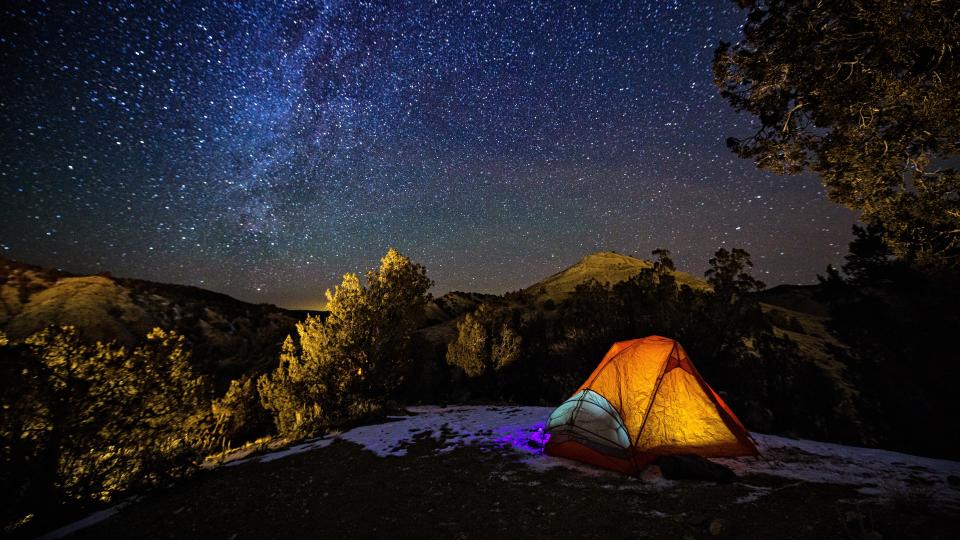
2. Shape up
Getting yourself plus a large backpack full of camping gear up into high elevations takes more fitness than some regular jogging and the odd gym session can provide. First, you’ve usually got steep terrain to contend with to get to high altitude, which requires strong legs and lungs, and second, you’ll be getting less oxygen with each breath, so you’ll find that your cardiovascular system has to work harder.
The end result is that even if you are in quite good shape, you’ll feel surprisingly unfit climbing at altitude, and while that’s an inevitable part of high altitude camping, getting in shape before you go will help. If possible, get some regular hiking in while carrying a heavy backpack for a few weeks before you go, and if you don’t live near any hills, consider using heat training as an alternate method to increase your efficiency.
3. Do your research
Being an experienced camper can help you in lots of ways, from knowing how to pitch a tent to campfire safety, but high altitude camping is a a different kettle of fish. For starters, route-finding can be more difficult the higher you go, and you could easily find yourself in a very exposed area and without a water source when it comes time to set up camp.
Before you set off, do lots of research into the area where you plan to explore and find out what the terrain and conditions are like. You can use topographical maps to study terrain and possible camping spots and use route descriptions from organizations like the National Parks Service and Forest Service to figure out what to expect in terms of resources and current conditions. Know details such as what type of wildlife to expect where you're going and what altitude treeline lies at so you can be prepared.
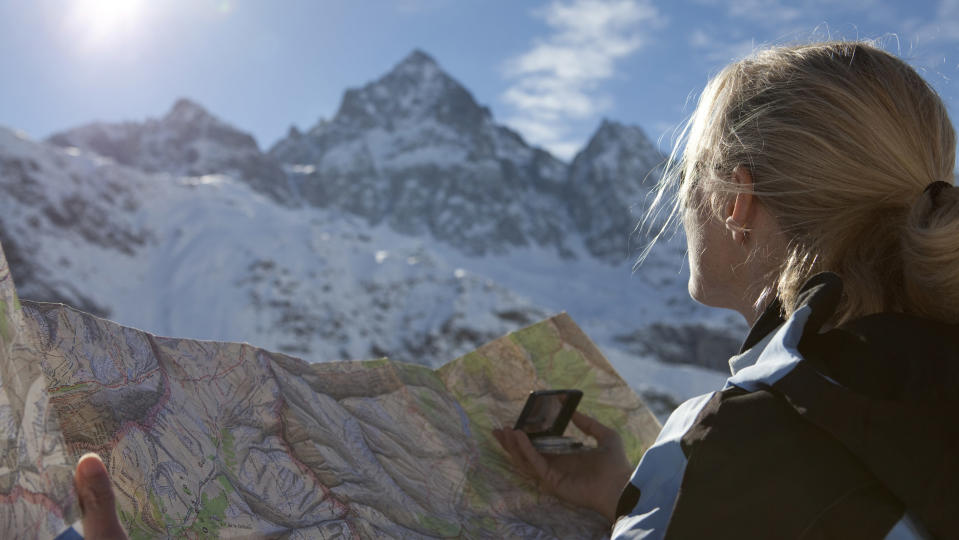
4. Watch the weather
When it comes to weather, what you really need to know is that at high altitude, things change fast. Temperatures are lower the higher you go, which can mean the precipitation falls as snow or hail even during the summer months, winds can be fierce and if you’re heading for the Colorado Rockies, afternoon thunderstorms are another common occurrence above treeline.
You don’t necesarily have to cancel your trip if the conditions don’t look perfect, but you’ll want to be prepared with the right gear – that might mean winter or four-season kit even in summer. For a longer trip in the backcountry, it may not be possible to keep tabs on the forecast, but keep your eyes on the sky and have a plan for what to do if things take a turn for the wild.
5. Pace yourself
Once you hit the trail, the altitude is going to slow you down, probably making you feel weak and breathless even if you’re in great shape. Your best approach is to take it slow and schedule in regular breaks. This also means you’re going to want to leave yourself more time than you think you might need to make up for your slower pace so you can get in before dark.

6. Fuel up
Under normal conditions, you might be able to get away with breakfast at the trailhead, a granola bar on the trail and a proper meal only once you’ve set up camp and broken out the camping stove. However, the added strain that hiking at high altitude places on your body combined with the dry air means you’ll need to take special care to eat regularly and drink lots of water.
If your backpack is compatible, use a hydration bladder so you can sip while you walk and bring a water filter so you can refill in the wild. Carry lightweight hiking snacks that you can nibble on to keep you going between meals and remember, carbs give you energy so don't just rely on jerky.
7. Protect yourself from the sun
When you’re backpacking, you’re always going to be looking for ways to shed ounces, but one weight-saving technique you’ll want to give a wide berth is leaving your sunscreen behind. The sun is much more intense the higher you go, thanks to less protective atmosphere to block the rays, and a sunburn can turn really serious when you’re out in the backcountry.
To keep your pack weight down, it’s better to rely on sun protection from your clothing, so wear a brimmed hat and dress in breathable clothing that gives you good coverage, such as a long-sleeved base layer and hiking pants, then you’ll only need a travel-sized bottle of sunscreen for your hands and face. Additionally, with the dry air and intense sun, the last thing you want to forget is your chapstick. Pack one with SPF and keep your lips happy.
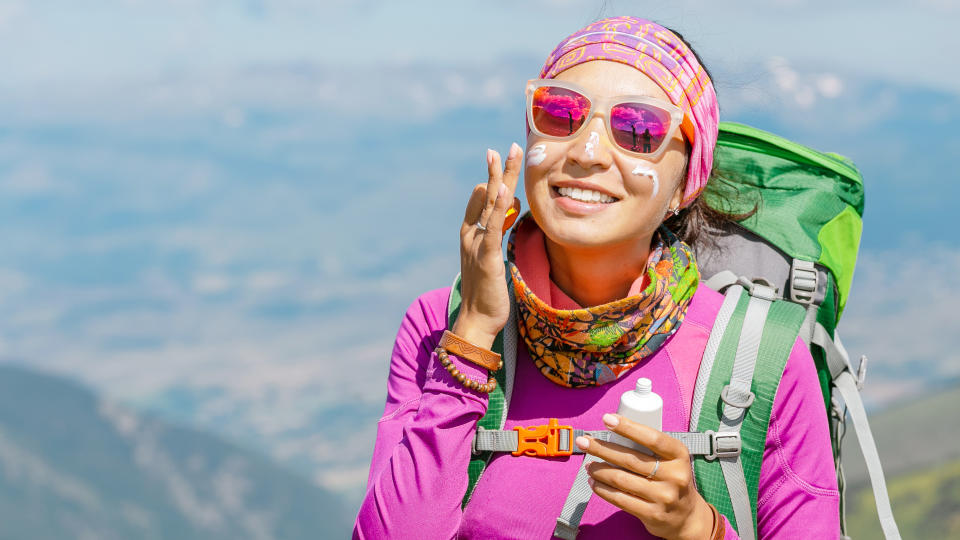
8. Bring a warmer sleeping bag
No matter the season and the weather, overnights are cold at high altitude, and your usual summer sleeping bag really may not provide nearly enough protection. Check the mountain weather forecast and make sure the comfort rating of your sleeping bag leaves many degrees of comfort at night.
9. And a tougher tent
If you’re likely to be pitching above treeline, there’s a good chance that it will be very windy, and a lightweight budget tent might not be able to withstand the force, especially if you can’t drive your tent pegs very far into the hard ground. If you’re looking at more exposed campsites, invest in (or rent) a sturdier tent that’s designed to hold up to gusty conditions.
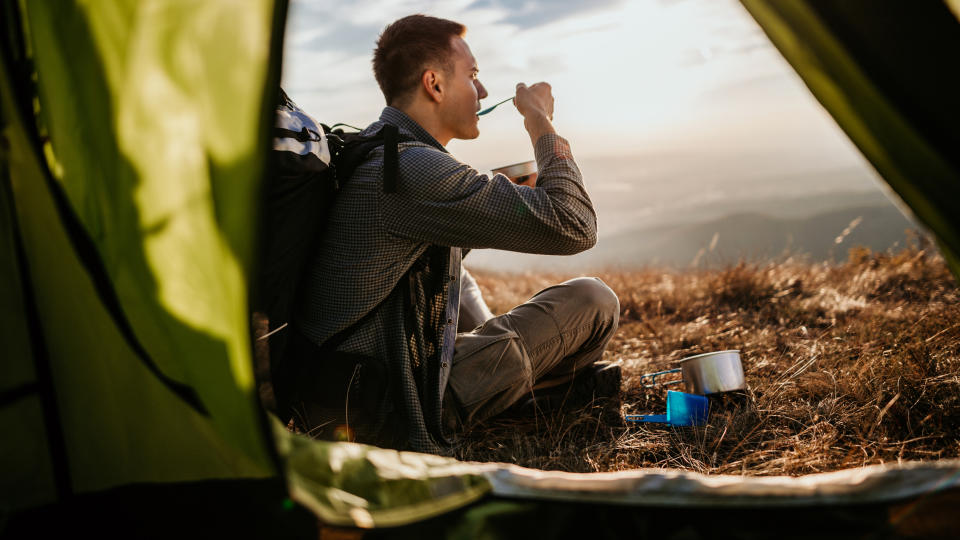
10. Layer up
Those cold overnights mean you’ll always want to bring extra insulation. During the day, you might be sweating if you’re hiking over boulder fields and the sun is beating down on you, but the sun often disappears much earlier in the mountains and it’s shocking how quickly it can get cold. Bring a down jacket to pull on and consider carrying an extra base layer so you always have a dry one. In addition to a hat and gloves, you might want thermal underwear even in the middle of July.
11. Seek shelter
The higher you go in altitude, the more remote the terrain and, in the US anyway, you’re probably looking at dispersed camping. When it’s time to pitch, it might seem romantic to pitch on a summit at sunset, but realistically you want to find a spot that will be sheltered from the wind and any potential lightning. If possible, camping near treeline is best, and alpine lakes that sit in bowls make the best high altitude spots where you have some shelter, a water source and can even do a little wild swimming and fishing if you’re so inclined.

